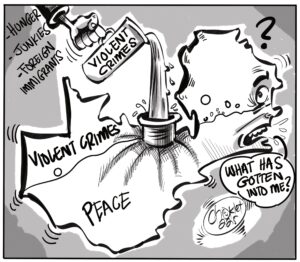HIGHER Education Loans and Scholarship Board (HELSB) chief executive officer Ireen Chirwa says the Board has recovered a total of K65.4 million since it rolled out its recovery scheme in January, 2018.
And Chirwa has asked beneficiaries of the loan scheme not to wait to be followed up before they can start paying back, saying the funds being recovered will be used to sponsor other students at public universities.
Speaking at a media briefing in Lusaka, Monday, Chirwa disclosed that K18.61 million had been recovered between January and June, this year, and disclosed that the number of institutions remitting on behalf of their employees had increased from one in 2018 to 13 by the second quarter of 2020.
“We have recovered a total of K65.4 million from time recoveries started in 2018 and the breakdown is: K8.6 million was collected in the last quarter of 2018, in 2019, January to December, we collected K38.13 million and between January, this year, and 30th June, we have collected K18.61 million. We are projecting to recover a total of K50 million by the end of this year. The Board has approached 43 other employers in the second quarter of 2020 for more recoveries. So, this will enable us to start recovering from an additional 1,553 beneficiaries by the end of August. We have provided support in this academic year (2019/2020), a total of 1,679 students in five public universities and the expenditure on these students is estimated at K33 million, which is within the K50 million projected from loan recoveries in 2020,” Chirwa said.
She, however, urged beneficiaries of the loan scheme to start remitting the borrowed funds without waiting to be called upon.
“They don’t need to wait for us to approach their employers; when one reads our Act, it actually gives a loan beneficiary an opportunity to approach as soon as they are able to start paying back. Everyone has a one-year grace period after they leave their institution of learning, either by graduating or any other means. But they don’t have to wait until the end of the grace period; they can approach us any time as soon as they are able to pay back. We need these funds to support other students and waiting for us to approach the beneficiaries, who already know that they are under obligation to pay back, has sort of slowed down what we should have been recovering. Though we have recorded success, we should have actually recovered much more if the loan beneficiaries were not waiting for us to approach them,” she explained.
And Chirwa said the Board had no challenges with collecting the money because deductions were done through the employers using data at NAPSA.
“For now, I think we are recording success because of the recovery through employers. For as long as someone is getting a salary, the employers have a mandate to deduct and remit. We are careful to discuss with the HR (Human Resource) departments of these employers on the provisions of the law in case they deduct and don’t remit, so we keep reminding each other. We have sufficient numbers of the people, which we have been given by NAPSA of both those in formal employment and those in informal. So, as soon as we are done with those in formal employment, the next target are those that are self-employed. And we have provisions of the law that we will be able to use in case of non-compliance,” she said.
“So, I think so far, we are okay in terms of compliance and there are actually some individuals, about 16, who have said they would like to pay in a shorter period. We have provided for a repayment mode, but we are also giving information to the beneficiaries that the longer they take to pay back, the more they pay in terms of interest. So, it is to their advantage to pay back within the shortest period possible and we are explaining the harmonization that we are using. The compliance for now is good, especially that we are doing it through employers.”
Meanwhile, Chirwa hoped that more students living with disabilities would be able to apply for loans under the 10 per cent provision for people living with disabilities considering that a lot of sensitization had been done.
“In terms of students living with disabilities, before we introduced a new criterion of selection last year, we were not able to segment which students were living with disabilities. But starting from last year, we’ve started recording the number of students that are living with disabilities even by way of changing our forms. Our forms now have a clause where a student living with disabilities is able to tick and also tell us the kind of disability that they have. So, we have been able to segment the students that we are awarding with loans. And for this academic year, we gave out 20 student loans to students that are at the University of Zambia, another four at Kwame Nkrumah University and six at the Copperbelt University. Unfortunately, we didn’t record any for Chalimbana, Kapasa Masaka and Mukuba University. So, we are hoping that with the sensitization that we’ve done, we should have more students with disabilities that should be able to apply for our loans because we have a 10 per cent allocated to students living with disabilities,” said Chirwa.
“The criterion I talked about is such that we have the first 30 per cent given to meritorious students, so everyone is able to compete in the first 30 per cent. Then the next 30 per cent is given to students who are coming from rural areas. The next 30 per cent is given to female students and then the last 10 per cent is given to students living with disabilities. But so far, the 10 per cent has not been exhausted by students living with disabilities. So, we end up giving the remaining percentage to the meritorious category.”
























